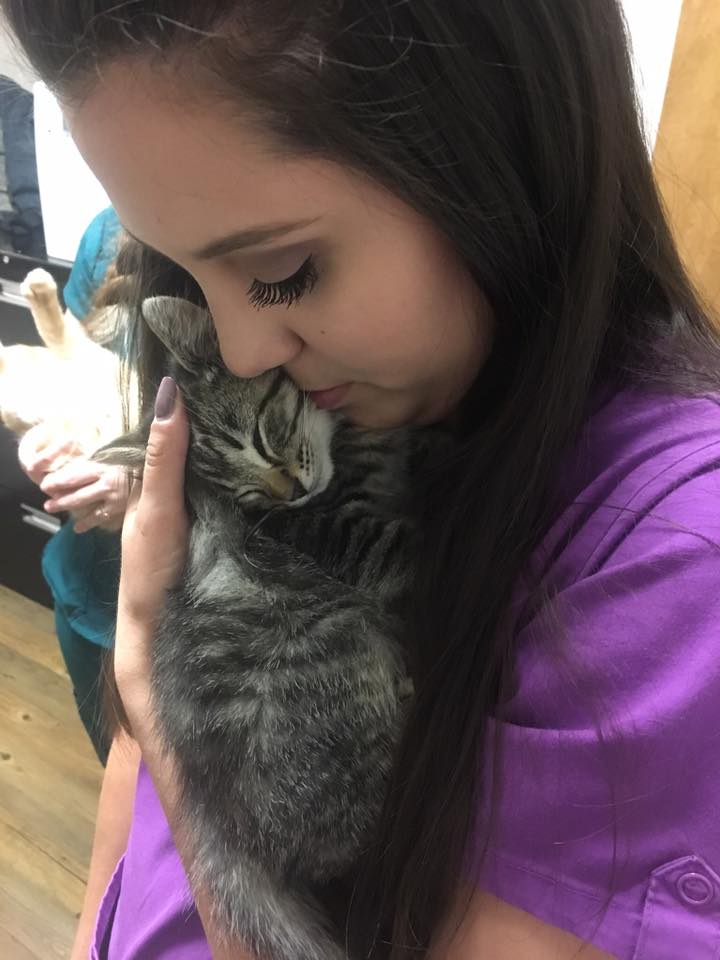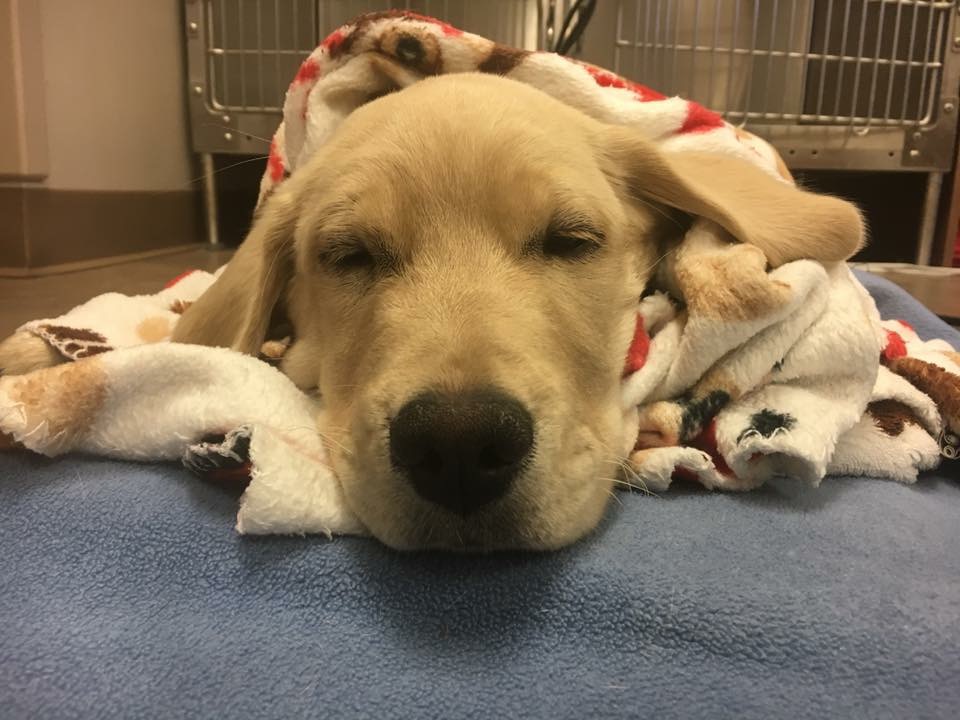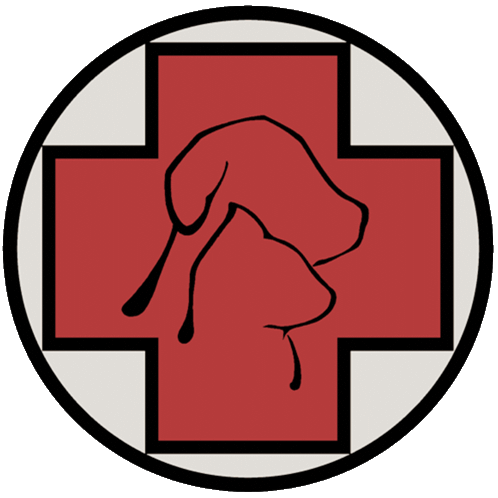Home Care For External Fixators
Your pet has had a big day or two. We are humbled and appreciate the opportunity to serve your pets surgical needs.
Recovering from a surgical fracture repair is one of the most challenging for our pets. They do not always understand the need to be still and careful while their bones are healing. We may have used different types of surgical implants to stabilize your pets bones so they are aligned and can heal. No matter the fracture repair procedure that was performed, the goal is for your pet to regain reasonable use of the limb as quickly as possible to prevent joint stiffness and muscle loss. It is likely your pet will want to use the leg in a few short days or within the week; however, it will not be completely healed for 12 weeks or possibly longer.
It is up to you and your family to keep your pet safe, confined, and assist them through this recovery. Excessive forces from rough play, running, jumping, falling, slipping on floors, or other activities can result in failure of the efficacy of the implants used to repair your pets fractures. Therefore, it imperative you watch your pet closely to minimize the risk of damage and the potential need for additional surgery.
Though rare, complications do happen. Fortunately, most are avoidable by close observation. Most complications are due to pet factors like over activity, licking, and chewing at the surgical area. Complications can include, but are not limited to: infections, wound opening, sutures coming out, implants breaking or bending, screws breaking, screws backing out.
Though not completely healed for 12 weeks, as your pet heals they will be allowed more activity about 4-6 weeks post-surgery, per your veterinarians discretion. As we recheck them, we will let you know what is allowed. As they are allowed more activity you will want to take it slowly, and if all goes well by 12 weeks they will be back to their normal routines.
If at any time you have concerns, contact us as soon as possible.
Successful healing depends greatly on your proper home care.
FACTS YOU SHOULD KNOW:
- Each pet is unique, and how they respond and recover from anesthesia varies. In general we have dismissed your pet only after they are able to stand and walk out of the hospital.
- Your pet will need to rest the night after surgery, so please watch them closely, but also give them their space so they can sleep and recover. It is normal for your pet to remain a little drowsy after going home.
- Young and active pets may come home and be very active and be their normal self. Please do your best not to encourage activity, including but not limited to no playing, no long walks, or other exercise. It is best to confine your pet to a crate anytime you are not able to observe them, or your not at home.
- It may be 24-72 hours before your pet is back to normal.
- Pets will often chew and lick stitches. Please ensure you pet has an e-collar available in case you need it.
- Do NOT give Aspirin, Ibuprofen, or Tylenol. These can cause excessive bleeding or be toxic to your pet. An additional safe and effective pain injection can be given at the time of discharge if the pet appears to be uncomfortable.
- Be sure to keep the pet WARM & DRY as they recover
Diet
- Give only small amounts water at frequent intervals tonight. You can offer a few laps every 15‑30 minutes for the first 3-4 hours after you get home. Do NOT let your pet drink a large quantity at one time as vomiting may occur. If no vomiting occurs by bedtime, leave water available to the pet during the night.
- In general do not feed your pet any food until the morning after surgery. Anesthesia may cause some nausea and vomiting if the pet is fed too soon after surgery.
- Regular diet the morning after surgery is allowed.
You may feed you pet a small meal after 8 pm if the following apply:
- Your pet has had normal activity level.
- If they have had no vomiting since coming home.
- They are acting starved and just will not wait until morning.
If vomiting occurs
- Withhold food and give Pepto Bismol at a dosage of one (1) teaspoon / 20 pounds. Call the hospital if vomiting continues into the next day. Give no food or treats by mouth as long as vomiting continues.
- Give only small amounts water at frequent intervals. Offer a few laps every 15‑30 minutes for the first 6 hours.
Activity
- Keep confined in a crate at all times when not being observed.
- Restrict exercise. No running, jumping, or play until instructed its ok to do so. Take out to potty or use stairs on a leash only.
- Exercise leg 2 ‑ 3 times daily to prevent stiffness.
- Please restrain your pet when leaving the clinic by using either a leash or a pet carrier to prevent them from getting hurt or escaping.
- If swelling occurs massage the leg gently several times daily to improve circulation.
- Medications administered following surgery may cause them to be sleepy. Keep your pet in a protected environment so that he/she stays warm and does not get hurt.
- Your pet can return to leash walks a few days after surgery. For the next 12 weeks, or until instructed otherwise, your pet should not be allowed to be off leash–EVEN in a fenced yard. We do not want them to suddenly chase any wildlife or play, as it could cause damage to the surgical repair.
Incision Care
- Watch any incisions for swelling, redness, or drainage. Apply nothing to the incision without our knowledge.
- Mild amount of bruising can be expected and is normal.
- Occasional dripping of blood or a blood tinged fluid is normal for first 24-48 hours, but if it seems excessive please contact us.
- Prevent excessive licking, and keep your pet in an environment that will keep incisions clean.
- Return in 14 days for suture removal. There is no charge unless sedation is required.
Medications
- Give the pain medication prescribed as directed on the label.
- Give any antibiotics prescribed as directed on the label.
- Apply topical medication as directed.
- Use other medications prescribed as directed on the label.
Bandages
The Support Rods of your pets external fixator have been wrapped with bandage material. This has been placed to reduce injury to your pet from the external fixature. It is important that bandage stays clean and dry to reduce the risk of infection getting into the pins exiting your pets leg
- Apply a plastic bag around the bandage when they go outside to keep it clean and dry.
- Notify the clinic if you observe any severe swelling, odor, or discharge.
- Keep your pet confined to prevent damage to the bandage.
- Discourage chewing. Call the clinic if this becomes a potential problem.
- Keep restraint device (e-collar) on at all times if they are chewing at the bandage.
- Report any loosening of the bandage or pins to our hospital.
- Do not attempt to repair the bandage without our permission.
- Do not allow your pet to go outside unattended.
- It is very easy for the External Fixators to get hung on things, so watch them carefully.
- Watch the skin for “sores” from the bandage rubbing the skin.
Care of the External Fixator
External Fixators are unique repairs as you can see the implants as they exit the skin. The pins you can see go into or through the bone. These type of repairs are very strong . They do have one major concern, the ease of bacterial entering into the bone and deep tissues that may lead to an infection and complications in healing. Keeping the pin an skin interface is critical to reducing those risk and is your top concern with home care. The best part of External Fixators is when they are removed your pet will not have any implants left in their leg to be possible problem in the future.
- To reduce the risk of the implant pins getting infected it is important the are where the pins enter the skin are kept clean. At least twice inspect the pins and remove any dirt, debris, or scabs with a wet cloth or gauze. I mild purulent discharge would not be too uncommon. After cleaning apply antibiotic ointment around the pins where they touch the skin.
- If you notice any pins that are loose inform us as soon as possible.
- If a heavy discharge or foul odor of any kind develops inform us as soon as possible.
- We will need to recheck your pets implants week for the next six to eight weeks to ensure the support rods, clamps, and pins are tight. The external skeletal fixation device is secured together by a series of nuts and bolts. These nuts and bolts can loosen over time with activity. Therefore, it is essential that you return every week for the next 8-12 weeks for us to inspect and as needed adjust the implants.
Other General Instructions
- Our major concern is the comfort and healing of your pet. We will do everything possible to help ensure their recovery at the least expense to you. Please remember that pets do not understand, and may cause self‑inflicted damage. We will charge for any and all drugs and medications required for complications created by your pets activity.
- Purchase an Elizabethan collar if your pet licks the sutures excessively. If after hours, they can be found at the pet stores.
- Many pets will not have bowel movements for 1 ‑ 3 days after anesthesia. This is normal, provided your pet is acting normal otherwise.
- It is best you do not give your pet a bath until any sutures are removed. In the event they must be bathed, apply Vaseline or antibiotic ointment to the incisions and shower them. Do not submerge in a bath.
Recheck Exam
Return your pet for its free post-operative recheck in 5-7 days, or sooner, if instructed by our team. To ensure proper fracture healing is occurring, we will want to recheck them WEEKLY, until discontinued by one of our veterinarians. Sutures are typically removed at the second recheck exam.
Notify the clinic if any of the following occur:
- Vomiting or Diarrhea after 24 hours
- Refusal to eat after 48 hours
- Any signs of discomfort or severe pain
- Any evidence of significant bleeding from the incision
- Continuous lick or pulling at the sutures (Restraint Collar May Be Needed)
- Excessive swelling of the incision
- The incision comes open
- Loss of appetite or severe depression
- Foul odor from from any applied bandage or splint
- Unexplained soiling or drainage from any applied bandage or splint
- Excessive chewing on any applied bandage or splint
- Any applied bandage or splint slips down the leg and/or out of the original position
- Any applied bandage or splint becomes wet, damaged, or soiled
Contact Us With Any Other Concerns
Please call us with any questions or concerns you may have. Though spays typically are routine major surgeries and rarely have complications, every pet is unique and any complications are better treated early; therefore, the sooner you contact us with concerns, the sooner we can intervene if needed.
Please feel free to contact us with any concerns or questions at
615-459-0806
or submit the form below
Thank You For Trusting Us With Your Pets Care!



